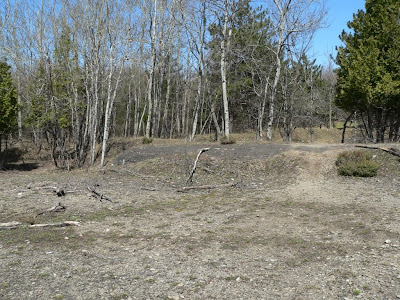RESPECT
City of Ottawa Consultations with Algonquin First Nations re South March Highlands
It is not the purpose of this post to suggest to the Algonquin how they should represent their people in consultations with the City of Ottawa, but rather, as an Ottawa resident, to suggest to the City of Ottawa that it should deal with respect with the Algonquin in representing our interests.
The Ottawa Citizen reports:
OTTAWA — The planned construction on the South March Highlands can’t begin until the city has held consultations with Eastern Ontario Algonquins, a native group says in a new letter to Mayor Jim Watson.There is more than a constitutional requirement to consult here, there is also a matter of respect. Respect for the First Nations of these lands would mean the city would not simply "seek" to have the clear cutting delayed but would refuse to allow it until meaningful consultations were completed.
...
The letter from the Kichesipirini Algonquin First Nation, a non-status band under the Indian Act, says the land is in the group’s traditional territory and so they have a right to a say in how it’s used.
...
After a recent discussion with the Algonquins of Ontario, [Deputy city manager] Schepers said, the city acted as a go-between with KNL, seeking to have the tree-cutting put off until the Algonquins can review the studies of the land, a process she understands could take till the end of the month.
Respect would mean that they City would follow the recommendations of the Aboriginal sub-committee to the Arts, Heritage & Culture Advisory Committee to Ottawa's City Council which states
BE IT RESOLVED THAT:Respect for the archaeological heritage of the First Nations means no clear cutting or other work on the lands would occur until proper studies can be done when the forest is clear of snow and the ground no longer frozen.
1. The City undertakes a comprehensive and meaningful consultation with all Aboriginal peoples who wish to participate regardless of status;
2. The current and planned site preparation and alteration activities, including tree-clearing, in the South March Highlands for the Richardson Ridge, Uniform, and KNL subdivisions be immediately halted pending consultation with the Indigenous people of the Ottawa River Watershed;
3. That the City request the assistance of the National Capital Commission who have a licensed archaeologist on staff;
4. That the City takes a leadership role in assuring that a full and credible archaeological survey is performed independent of the third party interest of developers.
5. That such an archaeological survey encompass the entirety of the South March Highlands.
6. That this be set in place as soon as possible.
But respect for this heritage means much more. These are not just isolated archaeological sites, they occur within a context. Identifying them, fencing them off and putting up plaques does not represent respect. These sites are within the context of the forest and destroying the forest context and replacing it with "ticky tacky" does not show respect for the First Nations heritage or the forest.
It is time for everyone involved, the developers and all levels of government to show respect.
Respect for the Community
Respect for the First Nations
Respect For the Land









































